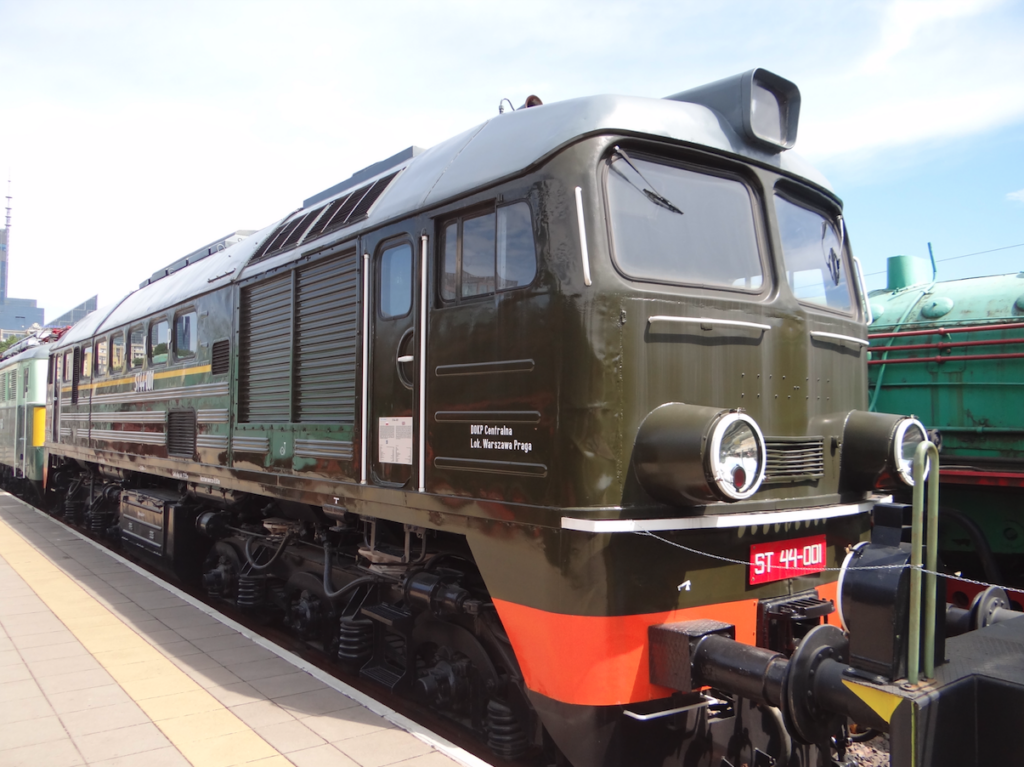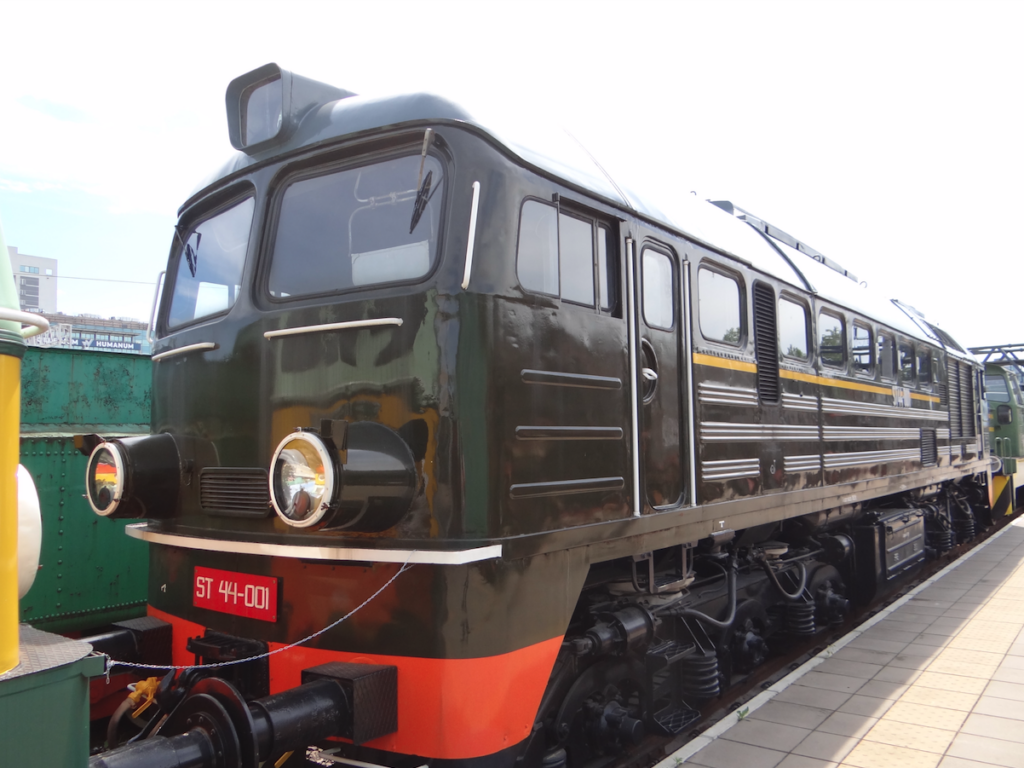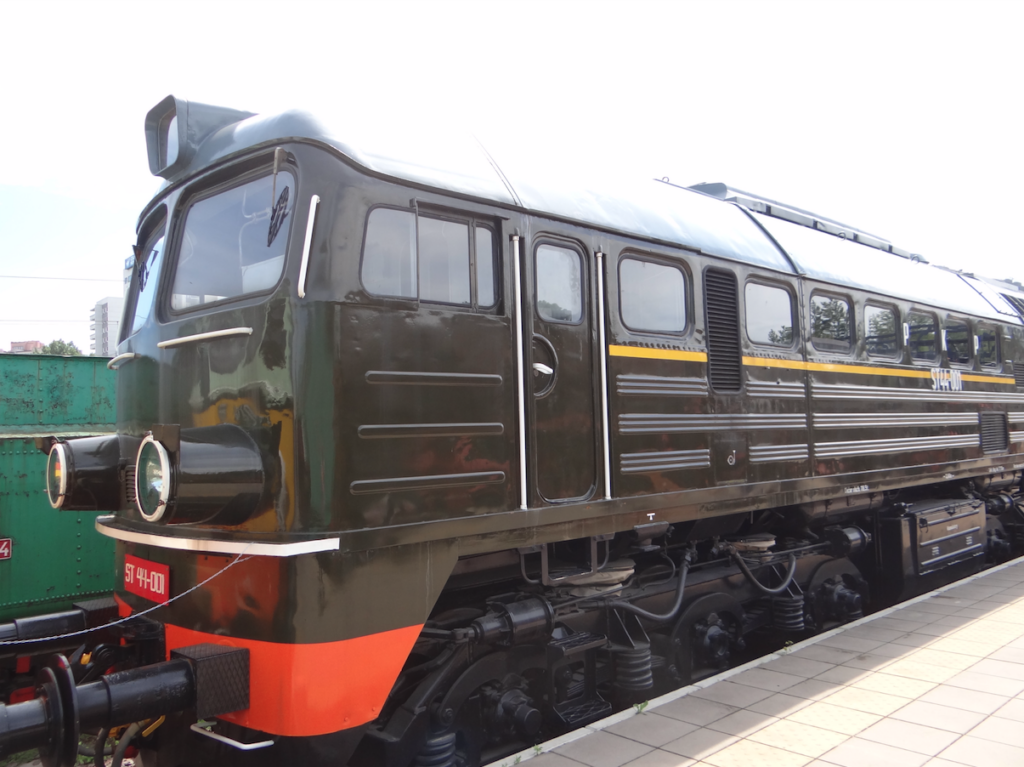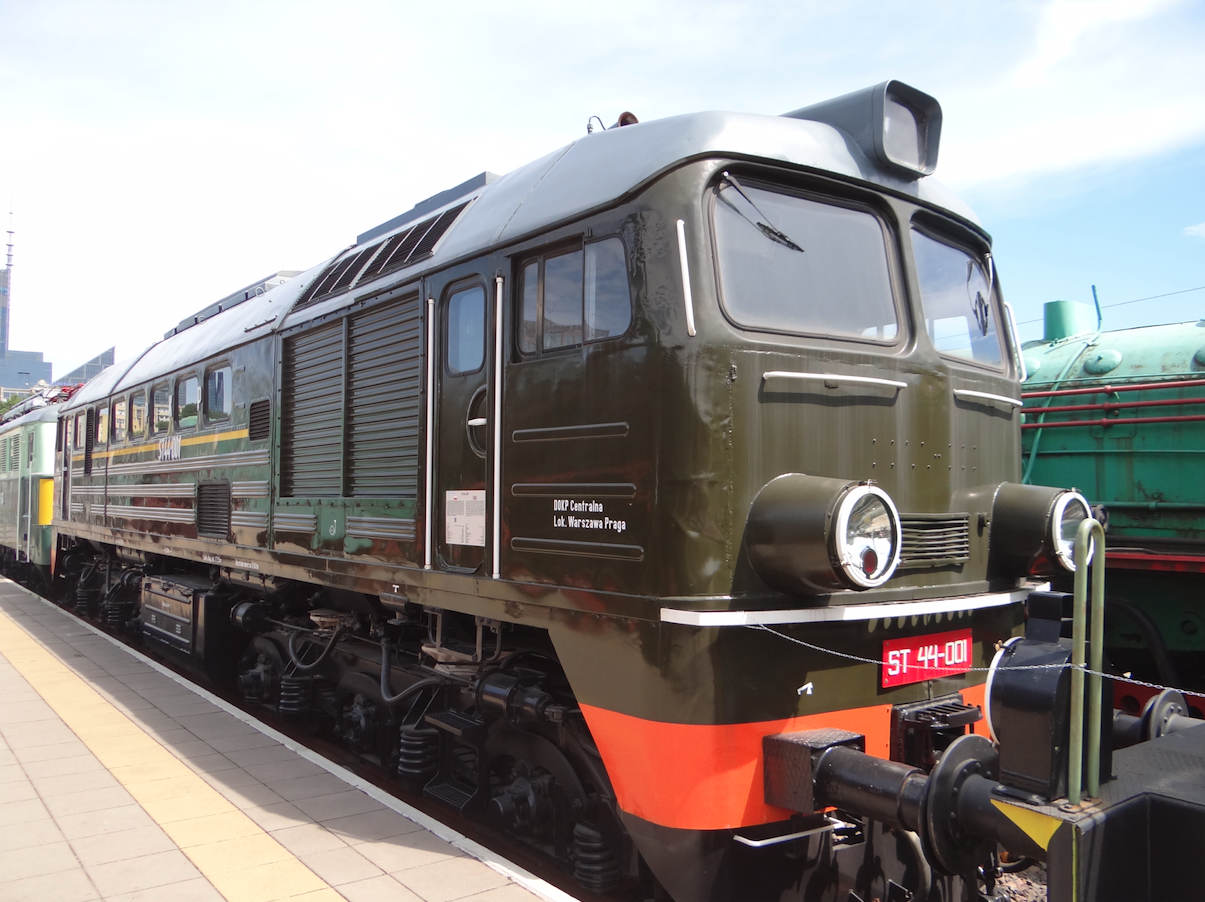Kraków 2025-02-08
Diesel Locomotives ST44, M62.



ŁTZ M62 (ST44) is a Soviet diesel locomotive that was produced by Luhansk Teplowozostroitelny Zawody in Luhansk for the CCCP and other socialist countries of the Council for Mutual Economic Assistance and North Korea. The locomotive is popularly called “Gagarin” or “Ivan”. The M62 (ST44) locomotives were produced in the period 1965 – 1988.
The locomotive combined all the typical features of machines originating from the Moscow state: high power, high weight, low quality of used components, low quality of workmanship, high failure rate, spartan working conditions of the mechanic and low operating economy. The mechanic’s cabin was neither heated nor air-conditioned.
The M62 (ST44) locomotive is a diesel locomotive with electric transmission, i.e. the so-called three-machine. The internal combustion engine used is type 14D40: Dezel, two-stroke, 12-cylinder, V-shaped, powered by a sectional pump, supercharged by a compressor and turbocharger, without intercooler, displacement 151,000 cm3, compression ratio 14.5, maximum power 2,000 HP, rotational speed up to 750 rpm, engine weight 12,500 kg. Each cylinder has 4 exhaust valves. There are no intake valves. The engine is characterized by high consumption of lubricating oil (two-stroke engine), minimum 5 liters per hour of operation. For this reason, the engine smokes a lot and pollutes the environment. The engine does not have a system to heat it up to facilitate starting at negative temperatures. As a result, the engine loses compression within a few months and becomes fuel- and oil-guzzling. The internal combustion engine is permanently connected to a generator that generates electricity to power 6 electric motors of the ED-118AU2N type. The internal combustion engine was manufactured at the Kolomna plant.
T-T ST44, M62 data:
Axle arrangement Co’Co’. Wheel diameter 1.05 m. Length 17.55 m. Height 4.62 m. Width 2.95 m. Weight 116,000 kg. Fuel tanks with a total capacity of 3,900 liters. Maximum speed 100 km/h.
The first country forced to buy M62 locomotives was Hungary. Additionally, Hungary had to adopt the Soviet designation M62, not its own designation. The only thing the Soviet manufacturer took into account was: the installation of end carriages with buffers and screw coupling, instead of the “Brezhnev Fist” and the inclusion of the Hungarian gauge of railway lines.
Poland was forced by CCCP to buy M62 locomotives, and thus to stop the production and development of Polish diesel locomotives: HCP SU45, SU46, SP47. Locomotives that were much more economical and reliable.
Since 1965, M62 locomotives were delivered to Poland for PKP, as ST44, and for Przedsiębiorstwo Materiały Podsadzkowych Przemysłu Węglowego, i.e. for Koleje Piaskowe. The Soviets took into account Polish demands resulting from Polish regulations, including appropriate headlights. The locomotives were painted green, and each locomotive had a different shade of green, because the paints were mixed “by eye”.
Poland was one of the countries that had to buy M62 locomotives until 1988. In total, PKP used 1,114 ST44 locomotives. Since 1990, many ST44 locomotives went to private rail carriers. Additionally, Poland was forced to buy M62 locomotives for the 1,520 mm track, to service transshipment terminals on Poland’s eastern border and to service LHS. 68 M62 locomotives were purchased. Currently, LHS has 32 modernized M62 locomotives. The modernization was carried out at the same level as the M62 locomotives for PKP. Additionally, private carriers bought about 8 more locomotives abroad, second-hand.
Two- and three-section versions were also built for the Moscow State Railways. Officially, they were talking about super heavy trains. In reality, the idea was for the locomotive to reach its destination after a failure of one combustion engine, on routes leading through wastelands.
In Poland, ST44 locomotives are subject to extensive modifications. The basic modification is the replacement of the combustion engine with a four-stroke engine from the Caterpillar family, Dezel. By 2020, about 86 locomotives had been modernized. The most advanced modernization is carried out by the Newag plant in Nowy Sącz. A Newag 311D locomotive is being built there, with only the frame and bogies remaining from the M62 (ST44) locomotive.
ST44-001.
The locomotive marked in PKP as ST44-001 was one of the first batch of locomotives delivered to Poland in the amount of 4 copies. The locomotive had small headlights. Initially, it was probably supposed to go to Hungary. The locomotive was built in 1965 and has serial number 053. On January 4, 1966, it was accepted for MD Warszawa Odolany. From 1972, it worked at MD Warszawa Praga. From 1997, on MT Warszawa Targowa. From 1998, it was waiting for scrapping. In 1999, it was transferred to the Railway Museum in Warsaw. In 2021, it underwent renovation to the level of a museum exhibit. It was repainted from green to olive green.
Written by Karol Placha Hetman
